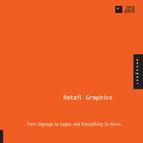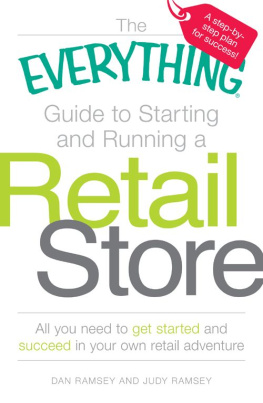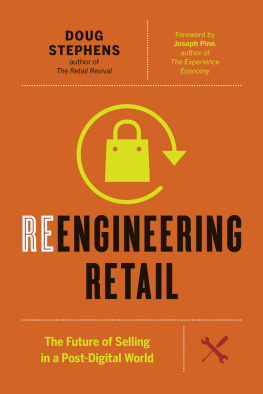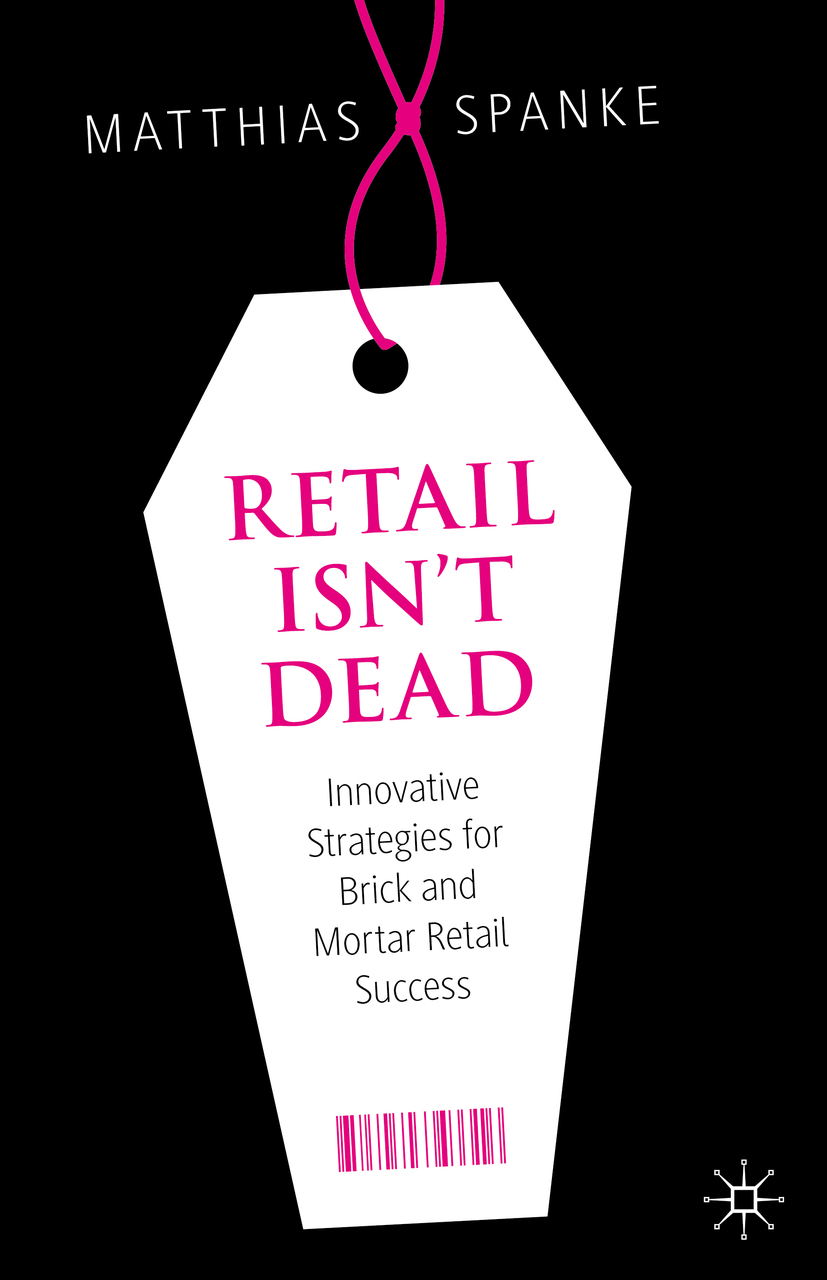Matthias Spanke
BIG IDEAS Visual Merchandising Inc, Miami, FL, USA
ISBN 978-3-030-36649-0 e-ISBN 978-3-030-36650-6
https://doi.org/10.1007/978-3-030-36650-6
The Editor(s) (if applicable) and The Author(s), under exclusive licence to Springer Nature Switzerland AG 2020
This work is subject to copyright. All rights are solely and exclusively licensed by the Publisher, whether the whole or part of the material is concerned, specifically the rights of translation, reprinting, reuse of illustrations, recitation, broadcasting, reproduction on microfilms or in any other physical way, and transmission or information storage and retrieval, electronic adaptation, computer software, or by similar or dissimilar methodology now known or hereafter developed.
The use of general descriptive names, registered names, trademarks, service marks, etc. in this publication does not imply, even in the absence of a specific statement, that such names are exempt from the relevant protective laws and regulations and therefore free for general use.
The publisher, the authors and the editors are safe to assume that the advice and information in this book are believed to be true and accurate at the date of publication. Neither the publisher nor the authors or the editors give a warranty, expressed or implied, with respect to the material contained herein or for any errors or omissions that may have been made. The publisher remains neutral with regard to jurisdictional claims in published maps and institutional affiliations.
This Palgrave Macmillan imprint is published by the registered company Springer Nature Switzerland AG.
The registered company address is: Gewerbestrasse 11, 6330 Cham, Switzerland
Preface
Ever since its boom, e-commerce has challenged the processes and services provided by brick-and-mortar retail. Customers love the speed and convenience of online retail, from quick and simple browsing through a vast number of products to payment at the touch of a button and delivery within a very short time to the hassle-free exchange of goods. E-commerce has massively changed the way customers shop. And those people have carried their expectations over to physical retailers. Against this backdrop, however, online business is more than just a competitor and challenge; it has also inspired and innovated the retail business.
If within seconds, customers can navigate through product selections online and find merchandise they are looking for, they will expect that process to be just as easy offline. If they can submit a payment on the web at the touch of a button or via facial recognition, they will hope for the same service in brick-and-mortar retail. Are these expectations too high? No matter how you answer this question, whoever wants to retain customers or attract new ones as a retailer today has to develop strategies to offer the same advantages and even more.
And things get even tougher; the innovation pressure will never end. After all, change paradoxically has come to be the only reliable constant in this globalized and digitalized world. On top of that, this change has happened at a breathtaking speed that, too, has no limits. Retailers may get a little satisfaction from the fact that these new regularities apply to the digital world as well.
But what exactly does online business offer that brick-and-mortar retail usually lacks today?
Let us begin with products: The Internet is never out of stock . In physical stores, the inventory on hand is limited, while online , there seems to be an unlimited selection. Here, you can navigate through an entire product range with just a few clicks instead of having the tedious task of seeking orientation in a crammed, potentially large store. A hopeless situation for brick-and-mortar retailers? Not at all; international retailers demonstrate solutions for this. Just two successful examples for these adaptations: Macys demonstrates how you can infinitely extend a product range in the truest sense of the word using virtual reality technology. The Home Depot leads its customers to the merchandise they want via the shortest route using its clever in-store navigation app.
Once a preselection is made, a second or third opinion is often required. Online , these opinions are provided right away as customer reviews, by the dozen at that. Examples from all over the world demonstrate how this can also be done offline in a creative and clever way.
Generally, if you have decided on an item, all you want to do is pay right away. You can do that in the online shop with just a click, fingerprint, or facial recognition. And the merchandise will already be on its way. There is nothing to keep physical retailers from offering the same service: From the checkout kiosk at Zara to Marks & Spencers Mobile, Pay, Go to the Just Walk Out technology of Amazon Go , companies demonstrate how that works.
Everyone passes their personal information and shopping habits alongsometimes deliberately but often rather unknowingly. These data are used with artificial intelligence technologies, which enables algorithms to predict the needs of customers. Thus, companies already know today what customers will want tomorrow, even before the latter themselves know it. H&M and other brands demonstrate how that works in brick-and-mortar retail.
But are speed and comfort enough to make a brand really tangible for customers in the physical retail business? Definitely not.
The fact that customers are able to touch, try on, and personally see and compare merchandise in the physical world already presents an advantage and a good start. But why not turn that directly into a brand experience for the customer? At Nike in New York, you can test sneakers on the in-store basketball court and also be guided through user-defined exercises on enormous HD screens . John Lewis & Partners in London fulfill the dream of spending a night at the department store to convince oneself of the quality of the beds there.
To customers, stores are not just places where goods or services are sold. They areor at least are able to becomepart of the community . With co-working spaces like those at the bank branches of Capital One or yoga lessons at sportswear vendor Lululemon , companies demonstrate how they have become a permanent fixture of the community . And thus a permanent fixture in customers lives.
In terms of sustainability , too, retailers need to change the way they think. In recent years especially, customers have become more aware of the disastrous global development of the environment . More than ever, they expect strategies, commitment, and steps from companies to create long term value by taking into consideration how they operate in the ecological, social and economic environment . That already starts with the shop design. At the IKEA store in London, for example, only renewable resources were used and countless steps taken to successfully make this shop officially the most sustainable store of Great Britain. The number of customers who include an ecological commitment of companies in their purchase decision continues to grow.
There is a large number of steps that can and should be taken to gain competitive advantages in physical retail. The most important and innovative strategies for that are pointed out in this book. These include new brand experiences , potential applications of in-store technologies , sustainability initiatives, and steps to make online advantages available offline. This book is practical and user-oriented, with a lot of tips and over 50 illustrated best-practice examples from a wide variety of industries from all over the world.










